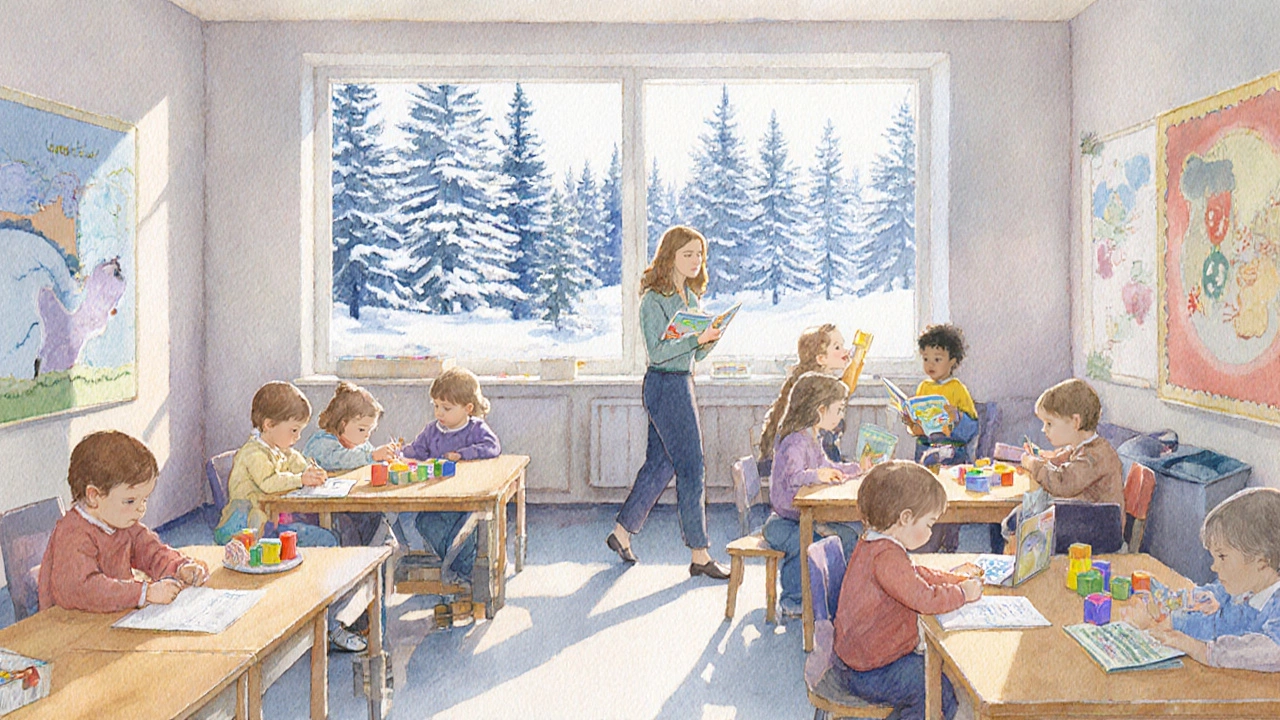Education System Matchmaker
Your Recommended Education System
Why This Fit?
Top Countries Based on Your Criteria
People constantly ask, “Which country has the best education system?” The short answer changes each year, but the deeper answer depends on what you value: test scores, equity, creativity, or lifelong learning. This guide breaks down the most reliable rankings, shows which nations consistently lead, and helps you decide which system fits your goals - whether you’re moving abroad, choosing a university, or just curious about global trends.
Key Takeaways
- Finland, Singapore, South Korea, Canada, and the Netherlands dominate the latest education rankings.
- Four core criteria drive those rankings: student performance (PISA), equity, graduation rates, and public spending.
- Each top country excels in a different area - Finland in equity, Singapore in math scores, Canada in inclusiveness.
- Choosing a system isn’t just about scores; consider language, culture, and post‑secondary pathways.
- Use the checklist at the end to match a country’s strengths to your personal priorities.
How Experts Rank Education Systems
Most global rankings rely on the Programme for International Student Assessment (PISA is a triennial test that measures 15‑year‑old students’ reading, math, and science skills.) because it offers a common baseline across nations. However, reputable reports-such as the OECD Education at a Glance, World Bank’s Human Capital Index, and UNESCO’s Global Education Monitoring Report-add three extra lenses:
- Equity: How close the outcomes are for students of different socioeconomic backgrounds.
- Graduation & Completion Rates: Percentage of students who finish secondary school and move on to higher education or vocational training.
- Public Investment: Share of GDP spent on K‑12 education, indicating governmental commitment.
When these four pillars are weighted (usually 40% PISA, 20% equity, 20% graduation, 20% spending), the resulting score offers a balanced view of “quality” versus “access.”
Countries That Consistently Lead
Based on the latest 2023‑2024 data, five countries regularly sit at the top of the composite index:
- Finland - renowned for low‑stress classrooms and teacher autonomy.
- Singapore - excels in math and science through rigorous curricula.
- South Korea - high student effort and strong university pipeline.
- Canada - praised for bilingual programs and inclusive policies.
- Netherlands - balances academic standards with student well‑being.

Side‑by‑Side Comparison
| Country | PISA Avg Score (2022) | Graduation Rate % | Public Spending % of GDP | Notable Strength |
|---|---|---|---|---|
| Finland | 531 | 92 | 5.7 | Equity & teacher autonomy |
| Singapore | 556 | 95 | 4.9 | Math & science mastery |
| South Korea | 544 | 94 | 5.0 | Student diligence |
| Canada | 520 | 91 | 5.2 | Inclusivity & bilingualism |
| Netherlands | 525 | 92 | 5.4 | Student‑centred learning |
Deep Dive: What Makes Each System Stand Out
Finland - Equality in Every Classroom
Finland is a Nordic nation that treats teachers as professionals with master’s degrees, low student‑teacher ratios, and no high‑stakes testing until age 16. The system emphasizes play‑based learning in early years, which translates into lower stress and higher creativity later on. Public schools are free, meals are provided, and special‑needs support is built into every classroom, which drives the country’s top equity scores.
Singapore - Precision and Rigor
In Singapore, education is a national priority, reflected in a carefully sequenced curriculum that intensifies math and science from primary school onward. Teachers receive continuous professional development, and schools use data‑driven feedback loops to fine‑tune instruction. The result is consistently the highest PISA math scores worldwide.
South Korea - High Expectations, Strong Foundations
South Korea invests heavily in after‑school academies (hagwons) and parental involvement, creating a culture where academic achievement is seen as a pathway to social mobility. While the pressure can be intense, the system boasts a 94% secondary graduation rate and a robust university pipeline, especially in engineering and technology fields.
Canada - Diversity and Accessibility
Canada’s education landscape is provincially managed, allowing for localized curricula while maintaining national standards. Canada offers bilingual (English/French) instruction, generous funding for Indigenous and immigrant students, and a strong emphasis on critical thinking over rote memorization.
Netherlands - Student‑Centred Flexibility
In the Netherlands, students choose secondary tracks (vocational, general, or pre‑university) based on interests rather than a single national exam. This flexibility reduces drop‑out rates and aligns education with labour‑market needs. The country also invests in digital literacy, making its schools tech‑forward.
How to Pick the System That Works for You
Scores are helpful, but the “best” system depends on personal criteria. Ask yourself these questions:
- What language do you want to study in? Finland offers strong English instruction, while Canada provides bilingual options.
- Do you thrive under pressure? Singapore and South Korea reward high‑intensity study; Finland and the Netherlands favour a relaxed pace.
- Is equity important? Finland’s inclusive policies make it a top choice for diverse learners.
- Are vocational pathways a priority? The Netherlands excels in linking school to apprenticeships.
- What’s your budget? Public spending percentages hint at tuition costs-most of these countries keep K‑12 free for citizens and residents.
Match your answers to the strengths table above, and you’ll have a clearer picture of which nation aligns with your goals.

Common Pitfalls to Avoid When Comparing Education Systems
- Relying on a single metric. PISA scores alone miss equity and graduation outcomes.
- Ignoring cultural fit. A rigorous system can feel overwhelming if you’re not accustomed to that learning style.
- Overlooking cost of living. Even if tuition is free, housing and daily expenses vary widely.
- Assuming rankings stay static. Policy reforms can shift scores dramatically within a few years.
Quick Decision Checklist
- Define your primary goal: academic excellence, well‑being, or vocational ready‑ness.
- Score each top country on language, pressure level, equity, vocational paths, and cost.
- Pick the country with the highest cumulative fit for your personal weightings.
- Research regional schools, admission requirements, and residency rules.
- Plan a visit or virtual tour before committing.
Frequently Asked Questions
Which country consistently tops the PISA rankings?
Singapore has held the highest overall PISA score for the past three assessments, especially excelling in math and science.
Is the Finnish system truly free for international students?
Public schools are tuition‑free for residents; many municipalities also welcome non‑EU families, though they may require a residence permit and modest fees for materials.
How does Canada support newcomers in its schools?
Provincial programs provide English/French language training, settlement services, and scholarships for immigrant youth, aiming for high inclusion rates.
Can I transfer credits between these countries?
Credit transfer is possible but depends on the receiving institution’s policies; the Netherlands and Canada have robust articulation agreements with many European and North‑American universities.
What role does public spending play in education quality?
Higher spending usually translates to better facilities, smaller class sizes, and more support services, which are key factors behind the success of Finland and the Netherlands.

